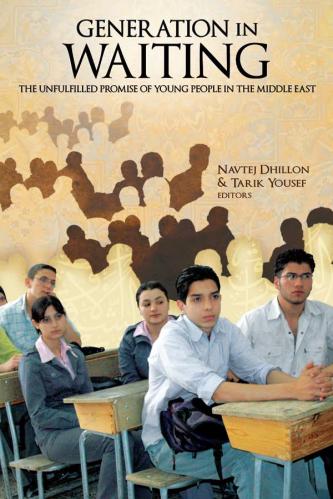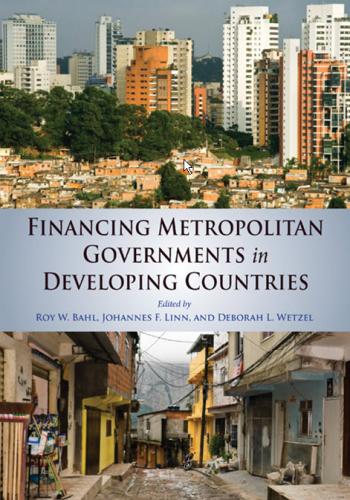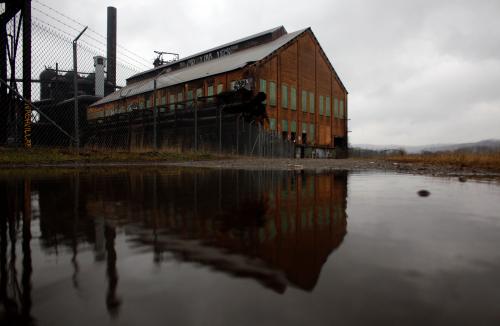Who says metropolitan efforts to improve their global competitiveness must remain mostly small ball?
Consider three initiatives—in Indianapolis, South Carolina, Paris—featured on a panel that I moderated at Brookings’ Global Cities Summit on September 28. These efforts confirm that boldness and scale are not just possible in urban economic development, but happening more and more.
What are the trends spurring greater local ambition, despite everything? More and more, it has become clear that to compete globally, cities must invest in local things, most notably clusters of advanced industries and the innovation and skills needed to drive them. After all, as Jesus Trujillo and Joseph Parilla write in the summit report, “all major cities are global…[yet] this urban age demands an informed, bottom-up approach to solving challenges.” That need is even more true when national governments are not always reliable partners.
Hence the self-help-at-scale on display at the summit. In Indianapolis, South Carolina, and Paris, local leaders are working systematically and boldly to materially improve their city’s foundations on the big things that matter most: innovation and skills.
In Indianapolis, the big move is the Indiana Biosciences Research Institute. At a projected $350–$400 million nonprofit research organization, IBRI is one of the most ambitious industry-driven attempts to systematically upgrade a region’s science base. Conceived in 2013 by leaders of central Indiana’s strong life sciences cluster, IBRI will expand the region’s discovery and innovation capacity in the life sciences, with a focus on metabolic disease.

For decades the cluster—anchored by industry leaders such as Eli Lilly and Company, Roche Diagnostics, Cook Medical, and Dow AgroSciences—has grown steadily without a highly concerted innovation strategy. Now, though, increased competitive pressures require added intent, so the companies have united around bringing the best life sciences researchers from around the world to Indianapolis. The scientists will collaborate with local teams to bring the next generation of medicines, devices, and food products to market. Their remit will be a collaborative form of “discovery with purpose.” Already more than $100 million has been raised to support this work. So much, then, for small ball: Indianapolis and its life sciences companies are responding to global challenges by investing locally—and boldly.
Nor is what is going on in South Carolina small ball. In South Carolina, the big move—sustained for more than a decade now—has been steadily advancing its workers’ skills to compete for jobs in global (often German) advanced manufacturing firms that are locating in the state. Where Indianapolis’s big bet focuses on innovation, South Carolina is investing in industry-relevant, in-demand technical skills.

At the center of this training lies the 16-colllege SC Technical College system, with its internationally recognized statewide workforce development programs. These include readySC and Apprenticeship Carolina. The readySC program has a solid track record in customized worker screening, training, and recruitment at little to no cost for employers. Meanwhile, Apprenticeship Carolina—discussed here and here by my colleagues Alan Berube and Joe Parilla—has provided apprenticeships for some 12,000 workers in some 800 companies at a time when many states are just dabbling at such programs.
Ultimately, the program is committed to establishing 2,000 specific apprenticeship programs by 2020 and to serve at least 20,000 apprentices. Hardly small ball. In South Carolina, as in Indianapolis, regional leaders have doubled down—working mostly on their own—to expand local capacities to enhance global competitiveness.
Turning to Paris, the big move is, well, gigantic—but involves substantial help from all levels of government of a type that has proved hard to orchestrate in the United States. The move in question is the new University of Paris-Saclay, which as Parilla and Marek Gootman described, will locate 18 disparate academic and research institutions into a single innovation cluster near Paris.
With billions of euros in investment from the French central government and strong support from the Île-de-France regional government, the Paris-Saclay project is far from local self-help, but it reflects the new model of local investment at scale. Already 10,000 research professionals and multiple global companies are working at Paris-Saclay. The longer-term play is to intensify technology development and commercialization by making institutions and companies more local.

According to Dominique Vernay, chairman of the foundation developing Paris-Saclay, the university aims to be in the top 10 in the Academic Ranking of World Universities, though “the first goal is to be the top university in continental Europe.” Ultimately, university’s founders want to transform their region’s economic potential, in part through partnerships with established global firms and in part through university and research spin-offs.
In each of these cases, in short, diverse localities are doubling down locally to compete globally. They are working to build local capacities, and taking matters into their own hands to do it. As such, they are—like more and more metros—intervening at scale to ensure they are “actors in their own drama, rather than just acted upon,” as James Fallows has said of other cities.
The Central Indiana Corporate Partnership is a member of its Metropolitan Council, a network of business, civic, and philanthropic leaders that acts as a financial and intellectual partner of the Metropolitan Policy Program at Brookings.
The Brookings Institution is committed to quality, independence, and impact.
We are supported by a diverse array of funders. In line with our values and policies, each Brookings publication represents the sole views of its author(s).






Commentary
City self-help goes large
October 3, 2016